Beaumaris Castle; possibly the greatest British Castle if only it had been finished.
/Menu
Why visit Beaumaris Castle?
What is there to see at Beaumaris Castle?
What is the history of Beaumaris Castle?
Essential information
Why visit Beaumaris Castle?
It is a brilliant example of a concentric castle, ie, a castle with walls within walls , loads of round towers, a moat, barbicans and no keep.
It was built by one of the greatest castle builders, Master James of St George, at a time just before cannons put an end to the first phase of castle building. He attempted to create the ultimate castle. (Henry VIII reintroduced castle building, creating low thick walled versions that could withstand a bombardment from cannons)
Master James was given a clean canvas on which to design and construct the best ever castle. There were no geographical constraints such as awkward shaped rock outcrops that needed to be built upon, unlike at Conwy for example.
There is good access to both sets of wall walks and so plenty to explore.
It is easy to see all the defensive features and how they added to the overall effectiveness of castles.
This was Edward I’s last Welsh castle in his iron ring and, initially, money was no object.
What is there to see at Beaumaris Castle?
On leaving the entrance building, this is your first view of the castle. Round towers, two sets of walls and a beautiful moat. Any attacker trying to cross the moat was a very easy target for crossbowmen shooting from one of the arrow loops or from the battlements. Some arrow loops are low down, some face sideways , whilst others are high up in the battlements and so all angles were covered.
Looking in the other direction you can see a bridge which would have been a drawbridge in the late 13th century. Any sign of an invading army would result in the drawbridge being raised and, thus, entry through the outer gate would be prevented.
The Outer Gate.
The Outer Gate was also known as the “Gate beside the Sea”. Boats could sail right up to this point to resupply the besieged castle. Edward I had planned for all of his iron ring castles to be built on the coast and so the Welsh tactic of starving the English into submission was now redundant. Holes arrowed just above the archway are probably where ropes or chains were drawn through to raise the drawbridge. Above the arch are machicolations which could be used to throw absolutely horrible things on the approaching attackers or to pour water down onto any fire. Apparently, there was a pair of wooden doors here and so fire was a possible means of attack. To the right of the bridge you can see a low wall jutting out. This is believed to be the base or “footings” of where the town walls met the castle.
Boat ring
The ring sticking out of the above tower was probably to tie up boats that had sailed in to resupply the castle. This area too, was well protected with arrow loops.
Plan of Beaumaris Castle.
The plan of the castle shows how symmetrical Beaumaris Castle was designed and built. Very few castles are as symmetrical as this.
The South Gatehouse
To get through this passageway into the inner bailey, an attacker would have to get through doors and portcullises with murder holes above. That is, of course, if the attacker managed to get to the passageway in the first place.
Hever Castle portcullis
To give you an idea of what the portcullises would look like, this photo shows two portcullises at Hever Castle. You can see how difficult it would be to get through there when they were down..
James of St George
On passing through the South Gatehouse, on your left you will see this statue to Master James of St George, Edward I’s “mister fix it” as regards castle building. He was Edward I’s master mason thought to be responsible for Harlech, Conwy, Caernarfon and Beaumaris castles but little was known about him until seventy years ago when Arnold Taylor, (the Chief Inspector of Welsh Monuments between 1946 and 1955), set himself the task of tracking down Master James. His eventual conclusion was that Master James had an earlier career, working for the Count of Savoy, a small area of alpine territory that spanned across parts of Switzerland, France and Italy. Castles in that area, including Chillon Castle on the shores of Lake Geneva, showed similar features to Edward’s unusual castles of North Wales. For example, the windows in Harlech Castle were unusual for England and Wales, but are similar to those found in Chillon Castle, Switzerland. Not only were the windows a similar shape, they were virtually the same size! When measured from top to bottom, there was only 5mm difference. Slanting “putlog holes” were discovered in these Welsh castles but were not seen anywhere else in Britain. Taylor found examples of these too, in Savoy. Since Taylor, questions have been raised with regards to the degree of Master James’s responsibility and nowadays, it is believed that he played a key part but Edward I was also a key player in his castle designs and decision making. Others too, had roles to play but Master James, certainly was one of the most important and was certainly a key manager of the castles’ construction. At Beaumaris it is believed that he played a considerable part, with the area, on which the castle was to be built, being a “blank canvas”, with no rock outcrops to dictate the shape of the castle.
A spiral staircase
The North Gatehouse.
If the castle had been finished, the North Gatehouse would have been another storey higher. Financial constraints and Edward’s focus on Scotland and France meant that Beaumaris was left incomplete but it was still a fine example of a concentric castle.
Wall walk. In the distance you can see the sea.
The outer wall and bailey.
A classic concentric castle has an outer wall and a higher inner wall with the area in between called the outer baily. Archers on the outer wall can shoot attackers who are getting close to the castle, whereas, archers on the inner wall, will safely shoot over those archers and target attackers at a greater distance. If the outer wall is breached, attackers can be picked off in the outer bailey/ward and whilst they attempt to climb the much higher wall.
Both walls and the outer bailey.
Here you can see an arrow loop facing sideways and not outwards. This was to pick off any attacker who had got into the outer bailey/ward and was close to the inner wall. You can also see a crack in the wall. This is where there has been some subsidence because the underlying rock is clay that once formed a small marsh and has shifted slightly under the weight of the heavy masonry.
The large inner bailey.
In the middle of the castle you will see a large lawn inside the inner castle walls, this is the inner bailey or ward. Today there are no wooden buildings but back in the 13th and 14th centuries this would not have been an empty space. It would have some now demolished stone buildings and several wooden buildings.
Behind the South Gatehouse
The two arrows here show where two towers were to be built but were then stopped after a few courses of blocks were laid. Either side of the passage was meant to be some porters lodges but again their building soon came to a halt.
The east wall.
Looking at the east wall you can see two large fireplaces. These were for the Great Hall and for an important chamber. The Great Hall was used for feasting, a key room in all castles. The chamber, is thought by some, was to be for important people and even the King, if he was visiting. The chapel is also arrowed on the photo and again, there was always a chapel in a castle.
The chapel from the doorway.Note, the stained glass windows were designed and produced by architectural glass practice, Studio Melyn.
Inside the chapel looking up
A modern copy of reliquary placed on the altar.
A side view of the reliquary.
On the altar is a copy of a reliquary, an ornate box for holy relics. In such boxes saint’s bones or other such relics were kept. Praying whilst in the presence of saint’s bones would help the person praying to get closer to God and /or get a message to God. In the Medieval world, everybody believed in God. With life so short on earth, people believed there must be something more to existence than simply 30 years on earth. People were curious by nature and religion gave them answers to their questions. Everything could be put down to the hand of God and thus, satisfy the questioner. People were taken to church from a very early age and heard religious stories and teachings that made sense of what was happening around them. They saw “Doom Paintings” on the walls that depicted heaven and hell. Needless to say, heaven was wonderful, whilst hell, was an awful experience that would never end for sinners. Disbelieving in God was a terrible risk. In such a world, any help from saints was welcomed. Some of the relics were of course fake but in public, people did not dare to question them. Plus the Church was a very powerful organisation and so outward conformity was shown. Pilgrimages were carried out to see reliquaries. Thousands in England walked to Canterbury to the tomb of Thomas Becket to ask for help. Chaucer wrote his famous Canterbury Tales about a group of pilgrims walking to Canterbury and telling each other stories as they walked.
What is the history of Beaumaris Castle?
1283 Beaumaris’ predecessors
For the full story of Edward I and the creation of the “Iron Ring” group off castles see our blog “ Why did Edward I build castles in North Wales?
Conwy Castle, Caernarfon Castle and Harlech Castle came about after Edward I decided that he needed to control the whole of Wales once and for all after yet another costly war in 1282-3. His castles were to be accompanied by a new town, that was to be populated by English inhabitants and town walls . They were to provide garrison soldiers for the castle, provisions and income from taxation.
Each castle, was to be on the coast so that a besieging army would not succeed ever again. Siege warfare was a favoured and successful Welsh tactic and these new locations would put a stop to it.
Autumn 1294 another Welsh uprising
Despite the death of the Welsh leader, Llwelyn and all of Edward’s plans, the Welsh rose once more. This time, some of the rebels were led by a distant cousin of Llwelyn called Madog ap Llwelyn whilst others, were locally led. All three of Edward’s new castles at Conwy, Caernarfon and Harlech, were attacked with the rebels being successful against the unfinished Caernarfon.
Edward used his biggest army to date, to suppress this uprising. Thirty-five thousand troops bound for France were now turned around to take on the rebels.
Despite Edward being trapped in Conwy, his other armies were successful in defeating the rebels once again. One particular place, Anglesey seemed a weak link in his ring of fortresses and as a consequence, he decided to build one more fortress that he hoped would be his finest ever, Beaumaris castle. It took Edward only one week after arriving at Llanfaes in Anglesey to commission his master mason, James of St Georges to start organising for a new castle to be built. Edward wanted the best ever castle built and as fast as possible. He was prepared to spend £6000 in the first six months of construction, a fortune in those days! Building actually started in 1295 after 1,500 men had been recruited from all over England. As with the other castles he built, a brand new town was to accompany Beaumaris castle, which was to be populated by Englishmen. This meant that the old Welsh town of Llanfaes had to be demolished!
By the late 1290s, Edward’s full attention had now shifted to conquest of Scotland and money for Beaumaris began to dry up. From time to time, money was sent but the eventual outcome was that Beaumaris was never fully built.
1400 Owain Glyndwr’s rebellion.
In September 1400, Owain Glyndwr assumed the role of Prince of Wales and yet another Welsh revolt took place. In Anglesey, the rebels were quickly suppressed but three years later, rebellion broke out again with Beaumaris being besieged. There is some evidence that it may well have been taken. Eventually, Irish troops were used to put down the revolt in Anglesey and by the end of 1406, the rebels gave in.
Owain was never captured despite large rewards and offers of a pardon. He acquired a heroic status whereby, one day he would return to defeat the English. Shakespeare also included him in his play, Henry IV part 1.
14th-16th centuries a prison for religious prisoners.
Thirteen Lollards.
In 1396 13 religious prisoners were imprisoned in Beaumaris. They were called “Lollards” and were heavily critical of the Roman Catholic Church. In particular they read the highly illegal translation of the Bible. The Bible had to be read in Latin only and thus, to translate it, to possess a copy and to read it, were all illegal or heretical acts.
A Witch
In September 1422 Henry V died, leaving his throne to nine month old son, Henry VI. His Lord Protector during his early years was his uncle, Humphrey, Duke of Gloucester. Humphrey was the “power behind the throne” and as long as Henry VI remained childless, Humphrey was his heir and Humphrey’s wife, Eleanor Cobham was, potentially, the next queen. In the summer of 1440, Eleanor had her fortune told by two eminent scholars and she was informed that Henry VI would die the following year. This meant that Humphrey would be the next king and she would be his queen. News of such prophecies got to Henry and he immediately imprisoned Eleanor and her two astrologers in Leeds Castle, Kent. More charges against Eleanor were brought including consulting a witch called Margery Jourdemayne to get a love potion to help her conceive! In all, Eleanor was charged with 18 counts of necromancy and kept at Leeds. Eleanor’s first astrologer , Roger Bolingbroke was hanged drawn and quartered whilst the second one, Thomas Southwell, a physician, died in the Tower of London awaiting the same punishment. The witch, Margery Jourdemaine was burnt at the stake.
Poor Eleanor’s life was spared but she was humiliated, being divorced from Humphrey and then made to walk barefoot through the streets of London carrying a candle, the usual sentence for a prostitute. However, this was not the end, she was sentenced to life imprisonment, in various castles and finally in 1449 in Beaumaris. In 1452 she died there.
A priest is hanged drawn and quartered at Beaumaris
In Elizabethan times, England was under constant look out for Catholics and in particular, Catholic missionaries or Jesuits. Both the King of Spain and the Pope, wanted her removed from power and this led to plots to put Mary Queen of Scots on the throne and the Spanish Armada. One such missionary priest was called William Dai who was found guilty of treason and was hanged, drawn and quartered at Beaumaris where he had been held as a prisoner.
Find out more;
Essential Information
Getting there
Travelling by roadA545 (Menai Bridge) A5 (Bangor).
Travelling by rail15km/9mls Bangor, Crewe-Bangor/Holyhead route.
Travelling by Bus Ena’s 100m/110yards, routes 53/57/58 Bangor-Beaumaris-Llandonna/Penmon
Travelling by bike NCN Route No.5 (5km/3mls).
Postcode LL58 8AP
For further information, please contact: Traveline Cymru on 0800 464 0000 or National Rail Enquiries on 03457 48 49 50.
Tickets
During the Covid crisis you cannot buy tickets at the castle entrance. Contact https://www.cadwmembership.service.gov.wales/events/ Tickets have to be purchased online in advance. We actually saw people turned away because they had not purchased tickets online. No tickets can be purchased at the castle.



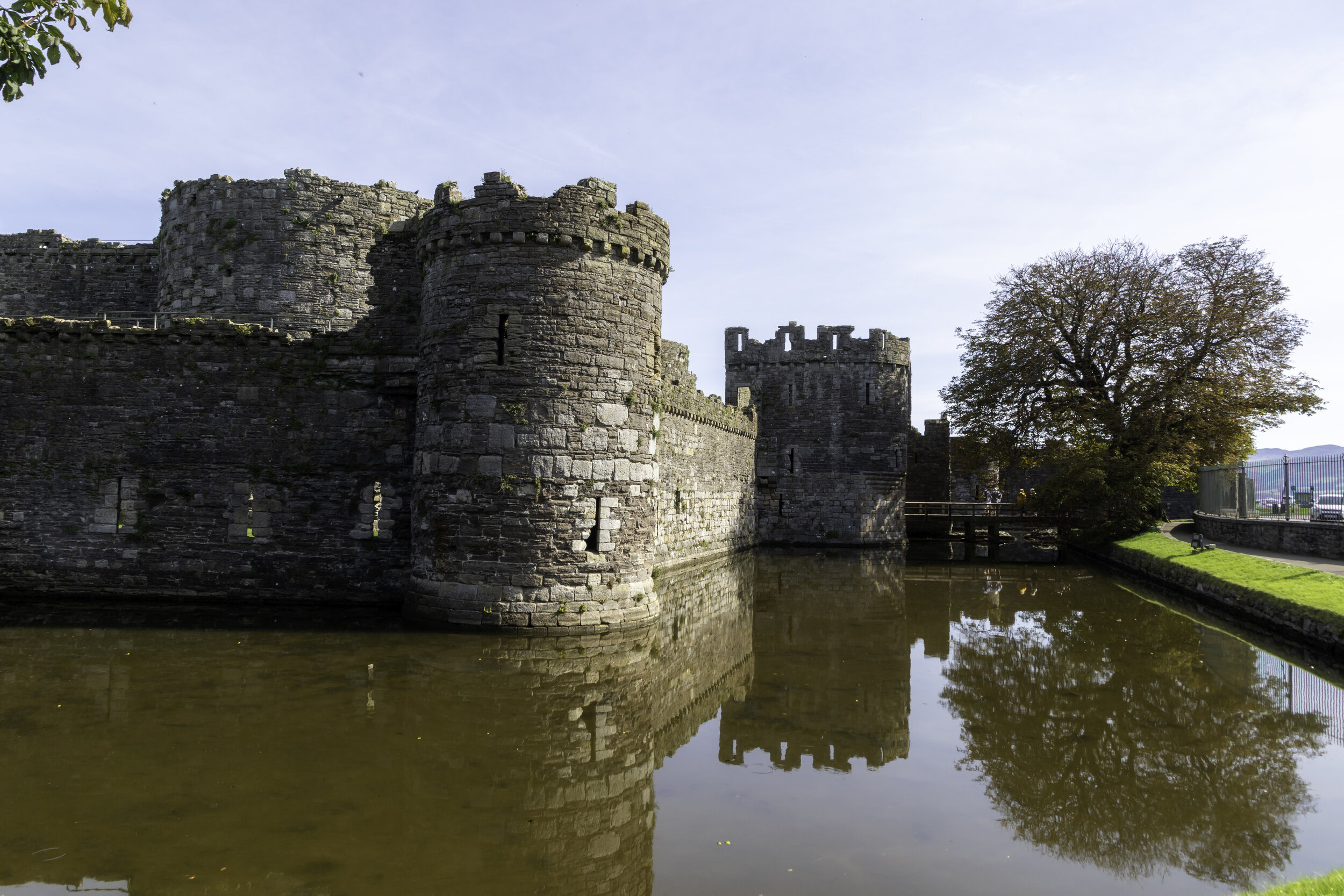
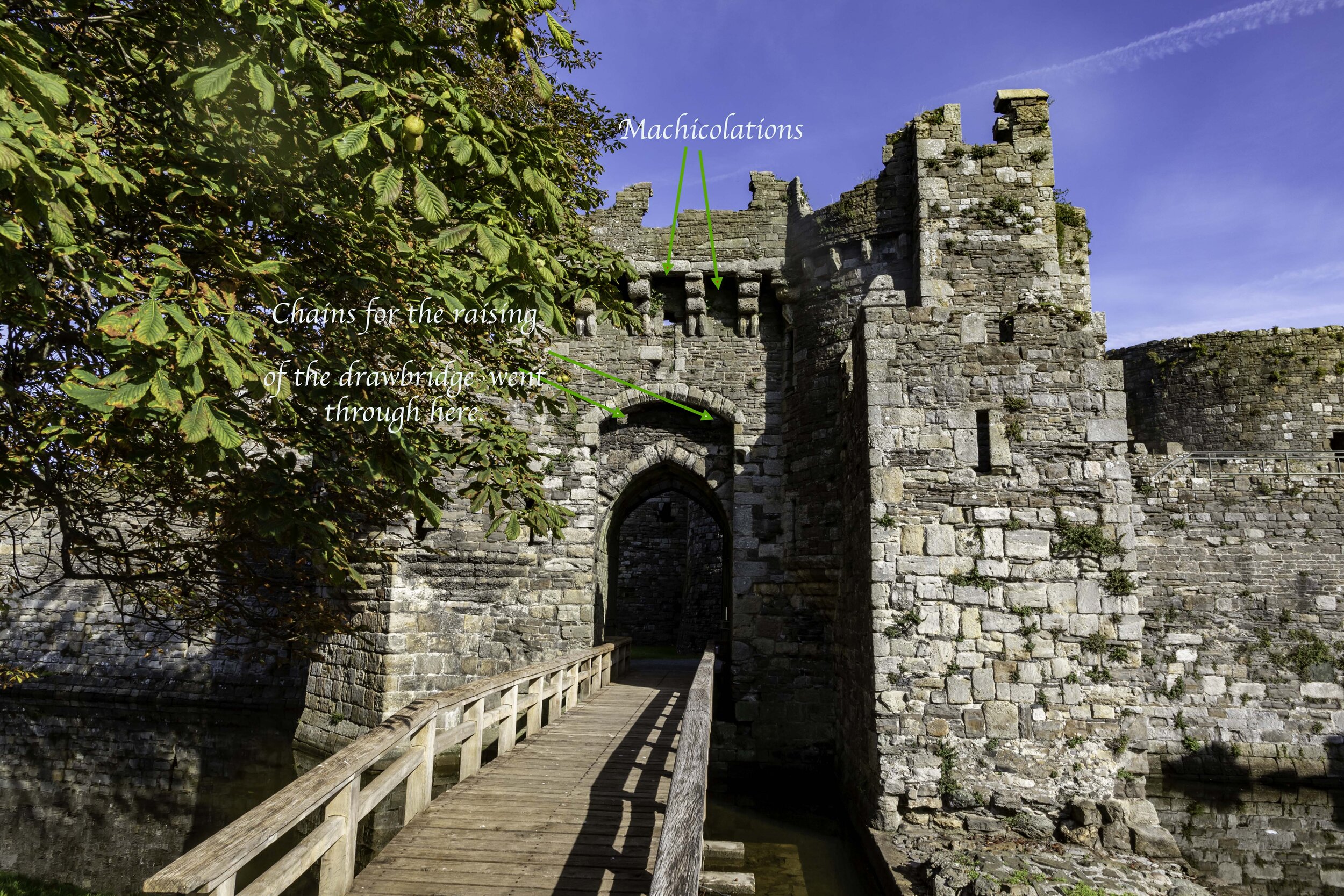






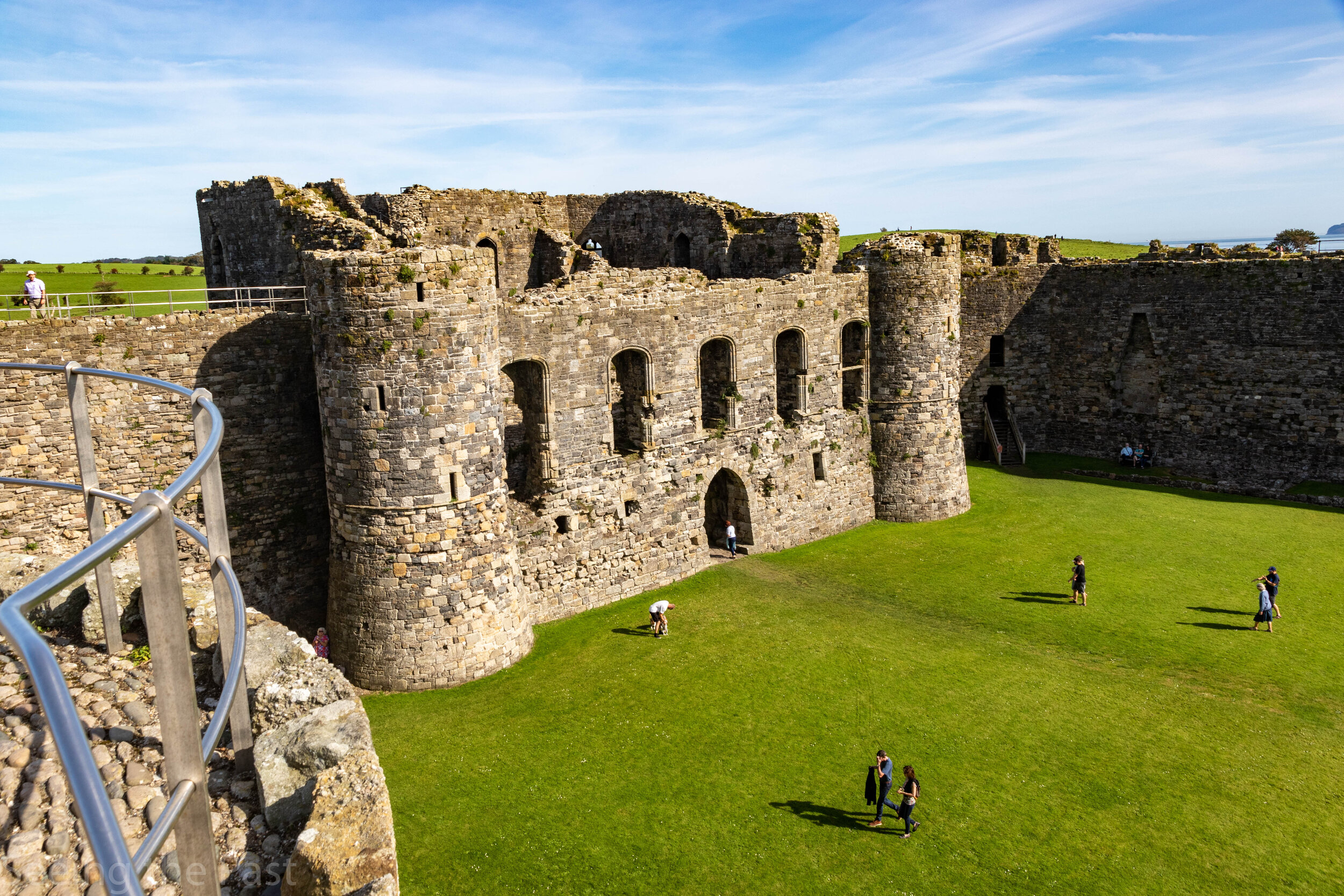
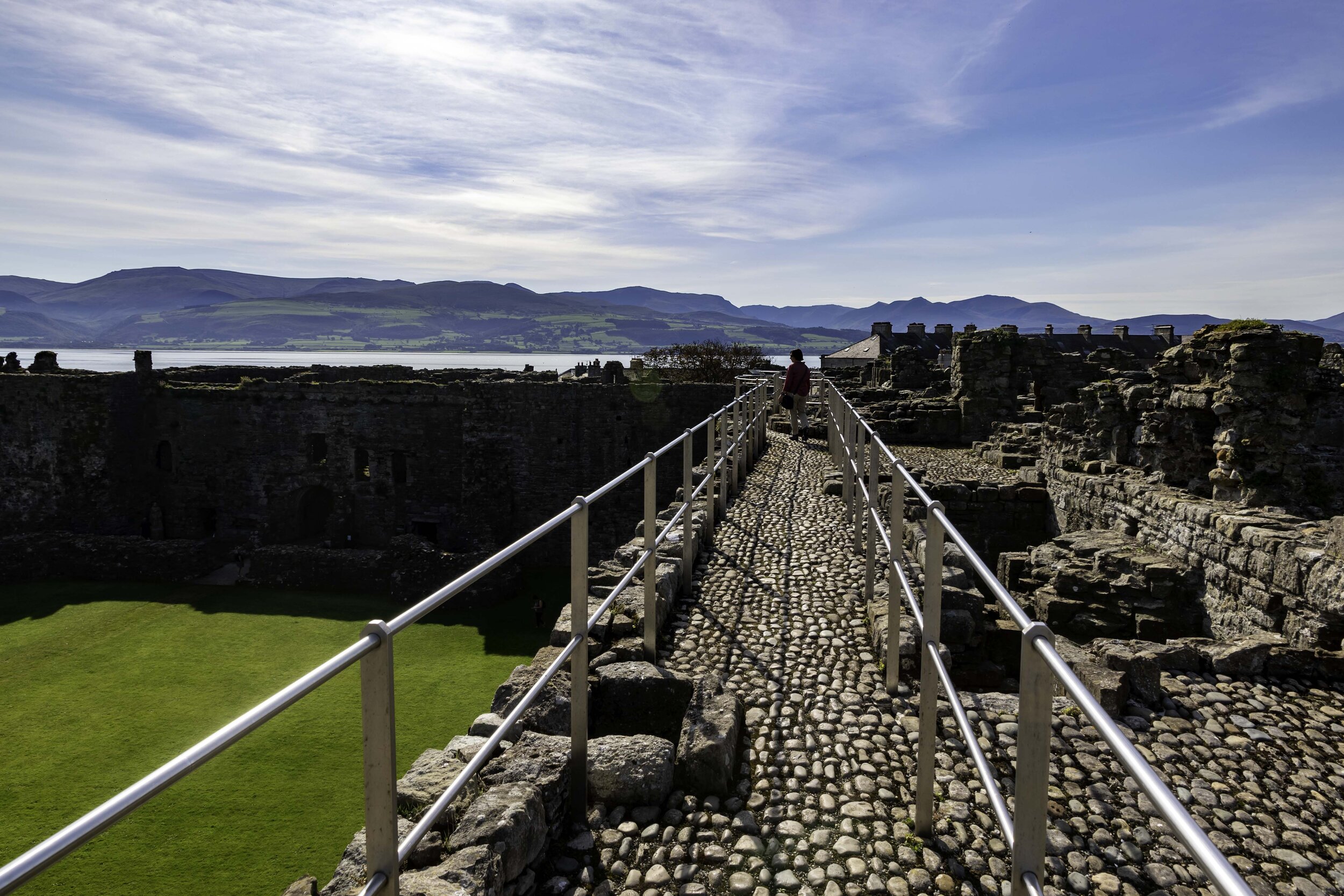


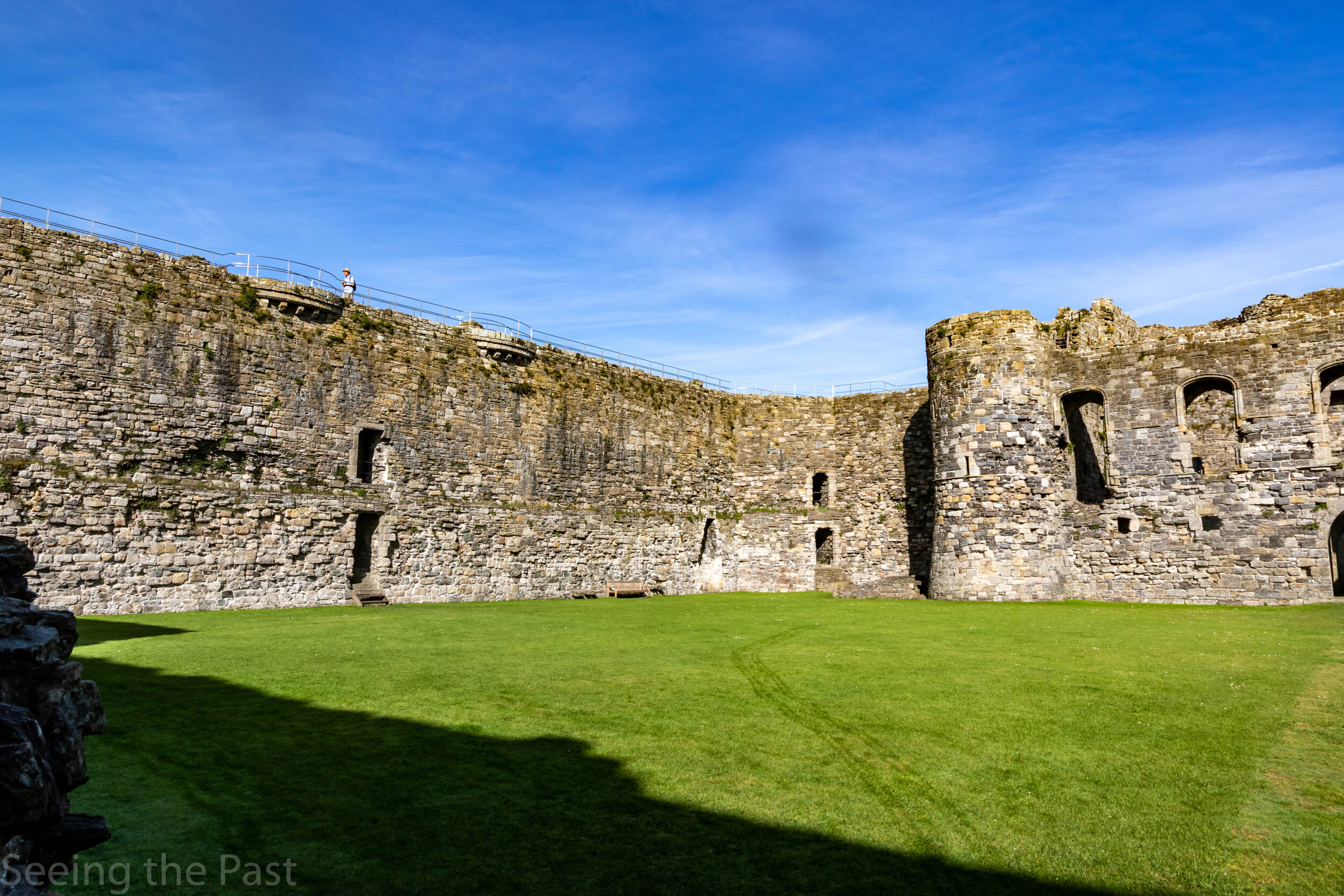








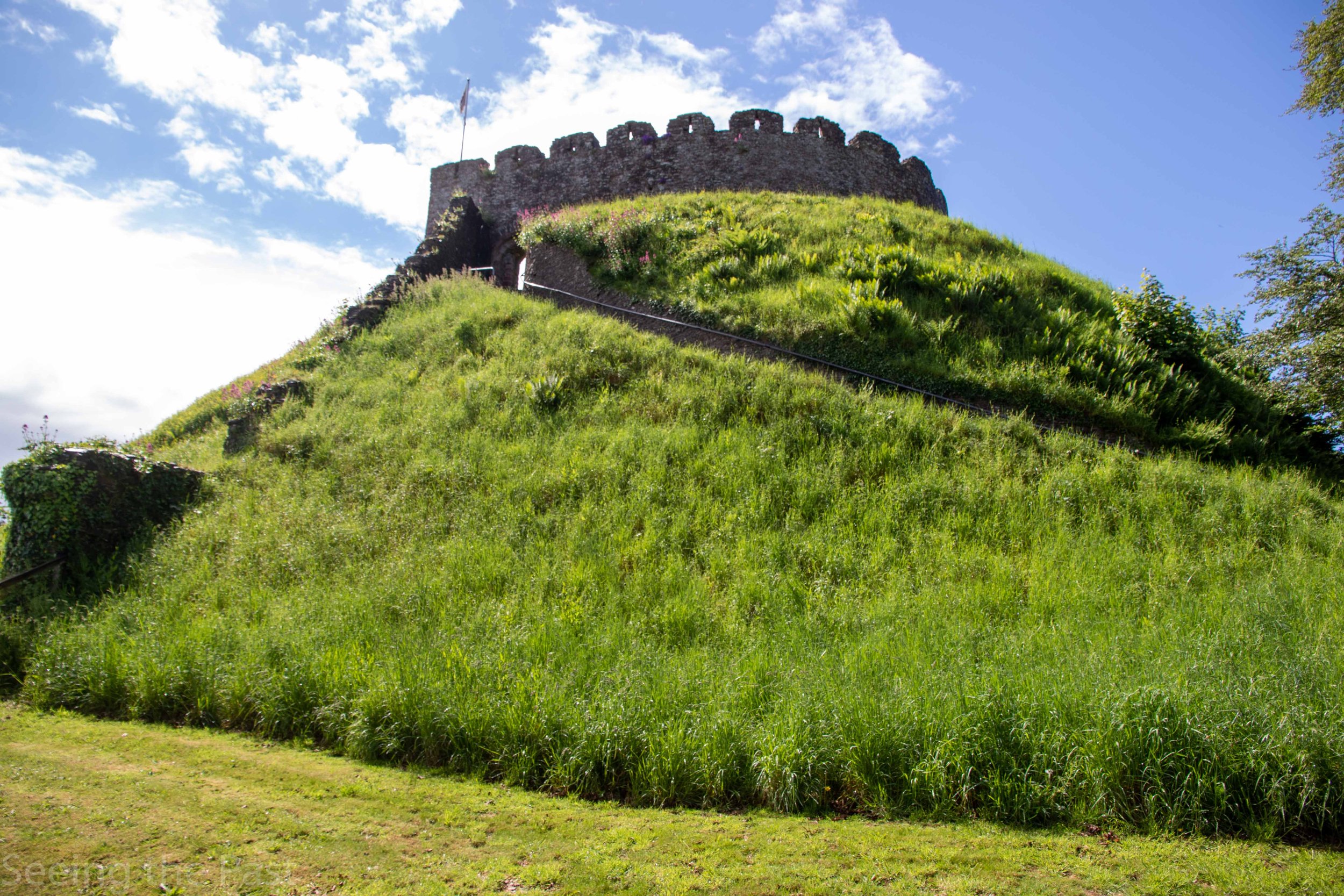

















As you wander around Kenilworth Castle it morphs from Medieval Fortifications to Tudor Palace and its story features John of Gaunt of medieval times to an Elizabethan love story involving Robert Dudley, aka the Earl of Leicester and Queen Elizabeth I. The castle was involved in the longest siege in English history and is an amazing place to explore. It features a huge square keep, the ruins of a medieval palace , Queen Elizabeth’s apartments and a reconstructed ornate garden created out of love for her.